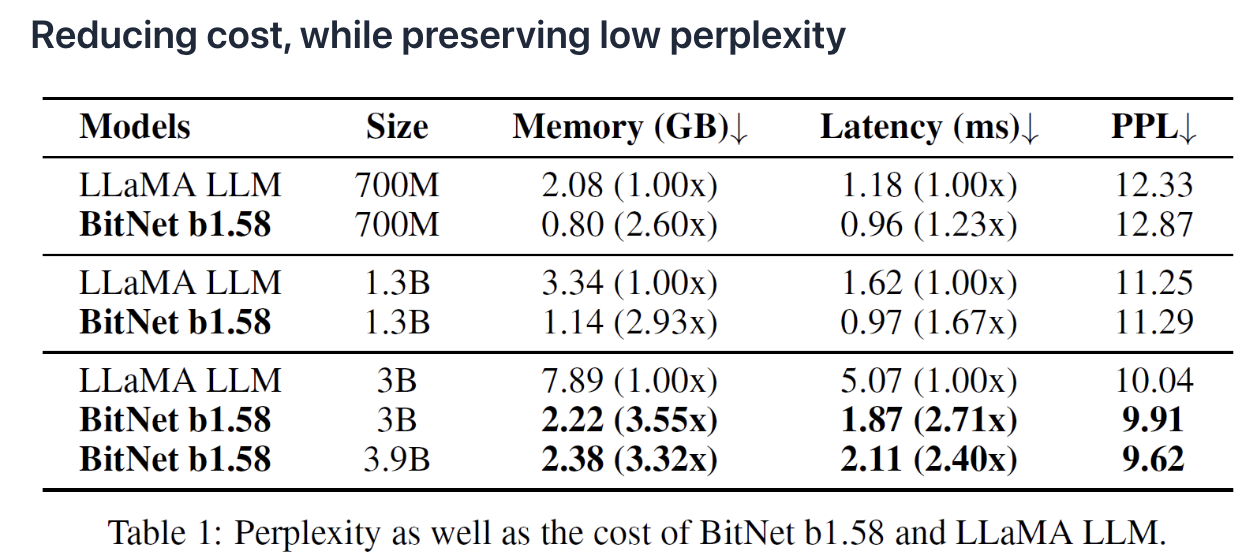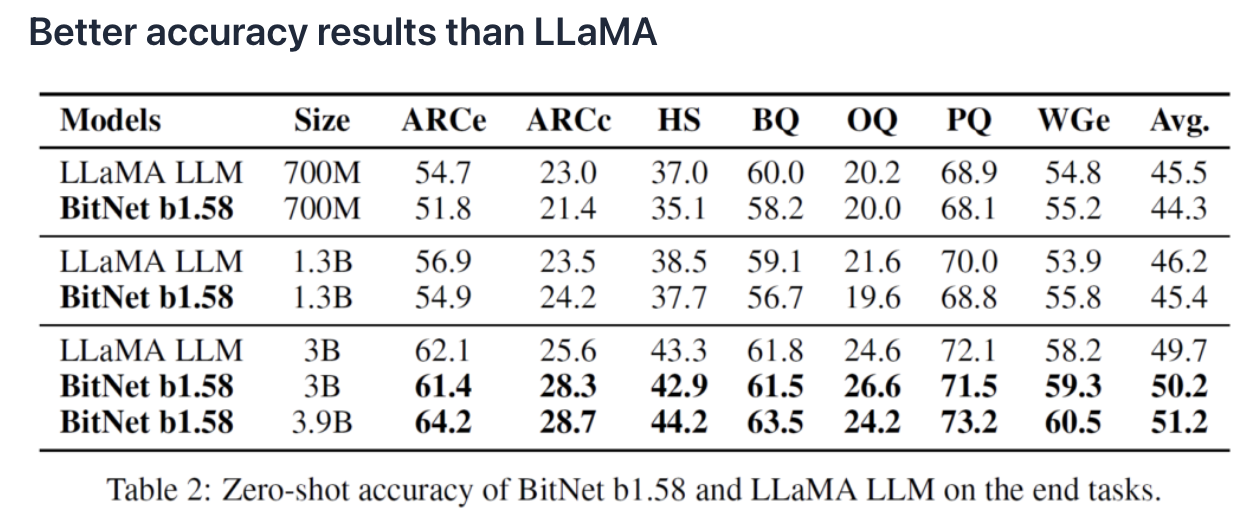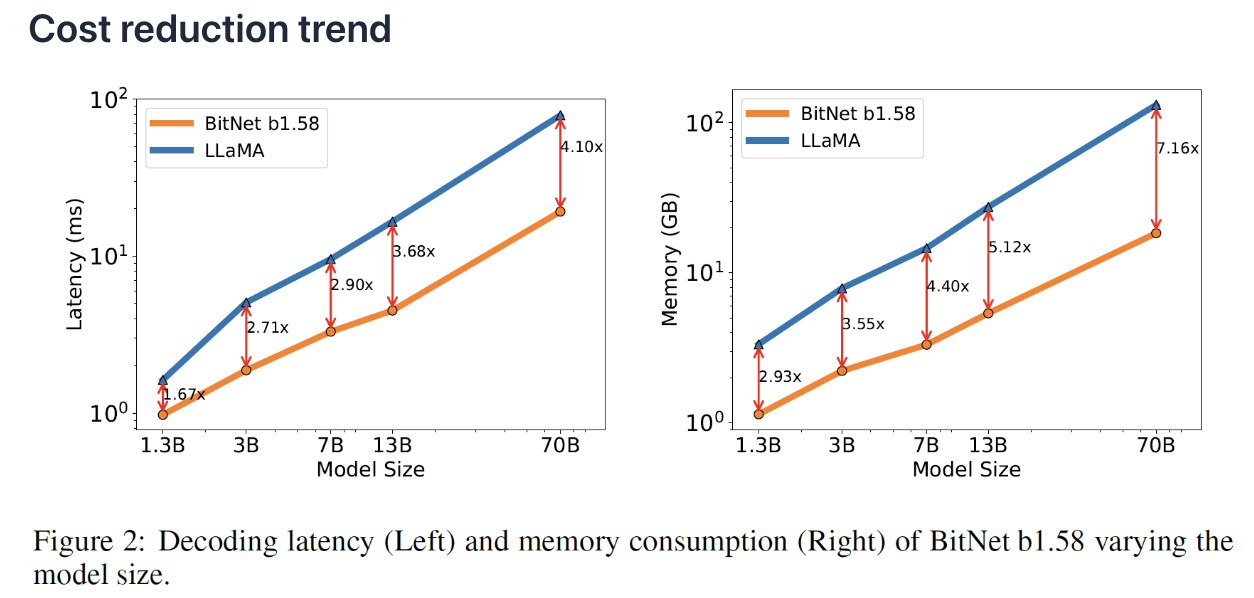The Era of 1-bit LLMs: All Large Language Models are in 1.58 Bits
Ma, Shuming, et al. "The era of 1-bit llms: All large language models are in 1.58 bits." arXiv preprint arXiv:2402.17764 (2024).
참고:
- https://aipapersacademy.com/the-era-of-1-bit-llms/
- https://arxiv.org/abs/2402.17764
Contents
- Post-training Quantization
- Abstract of BitNet b1.58
- Benefits of BitNet b1.58
- Additions Instead Of Multiplications
- Feature Filtering
- Reduce Cost Without Performance Penalty
- Model Architecture
- Experiments
1. Post-training Quantization
LLM is getting larger and larger!
\(\rightarrow\) How to efficiently run LLMs?
Quantization
-
Process of reducing the precision of the model weights
-
e.g., Converting the model weights from float16 to int8
\(\rightarrow\) So each weight is one byte in memory instead of four
-
Limitation: Decrease in the model accuracy

2. Abstract of BitNet b1.58
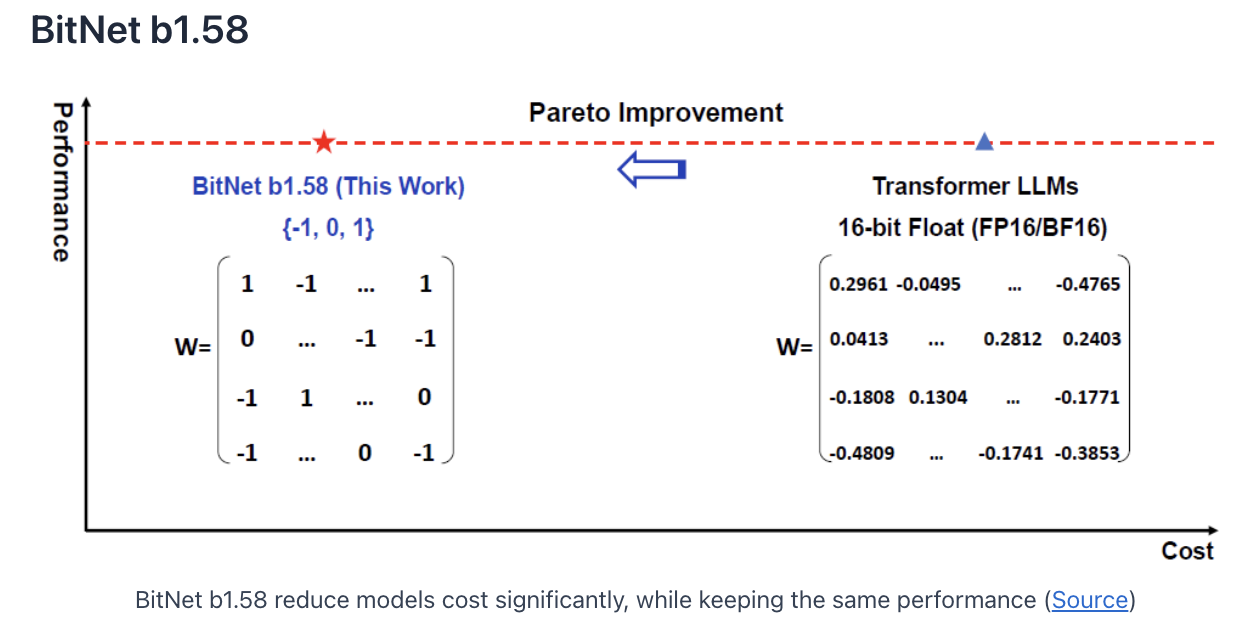
Propose BitNet b1.58
Three key points
-
(1)Reduce cost, while maintaining performance
-
(2) Ternary weights
-
Every weight is either -1, 0 or 1
\(\rightarrow\) Need less than 16 bits to represent the three possible values!
-
How many bits are required? \(\log_2(3) \approx 1.58\)
\(\rightarrow\) model weights are a bit more than 1 bit!!
-
-
(3) Trained from scratch
-
NOT adapted after the training
\(\rightarrow\) The model learns during training how to work with ternary weights
-
3. Benefits of BitNet b1.58
(1) Additions Instead Of Multiplications
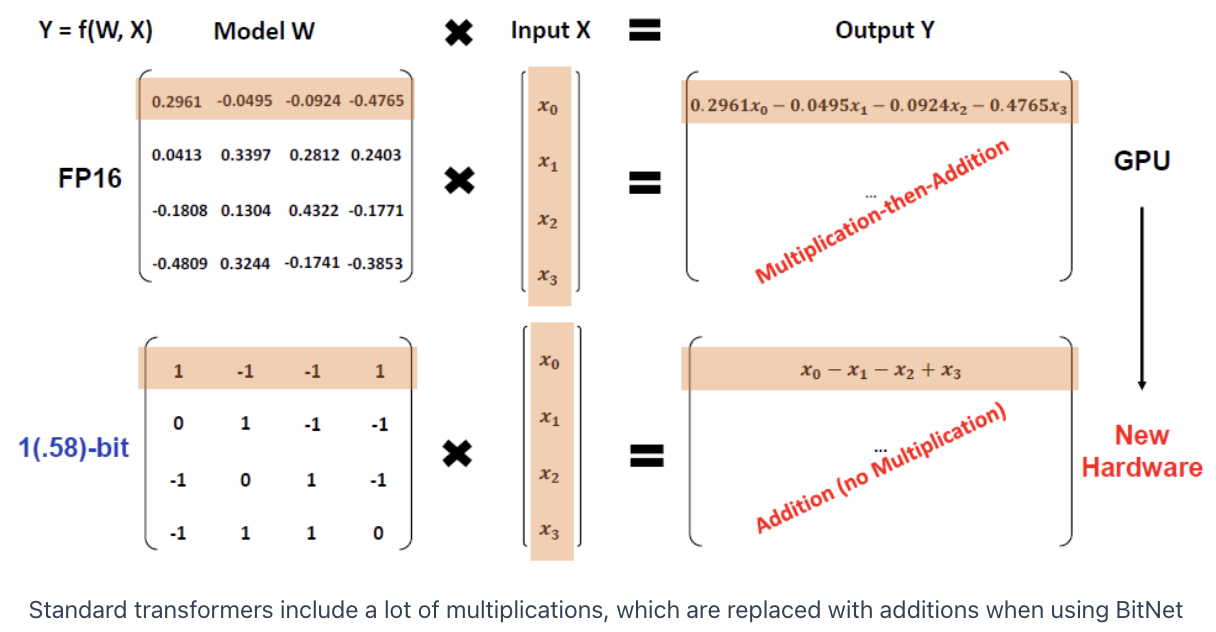
(2) Feature Filtering
Variant of the original BitNet model
-
(Original) BitNet = Each weight is either -1 or 1
-
(Proposed) BitNet 1.58 = Addition of 0
\(\rightarrow\) Allows the model to filter out features & significantly improve the latency!
(3) Reduce Cost Without Performance Penalty
Can match full precision models performance
( while dramatically reducing the cost to tun the models )
4. Model Architecture
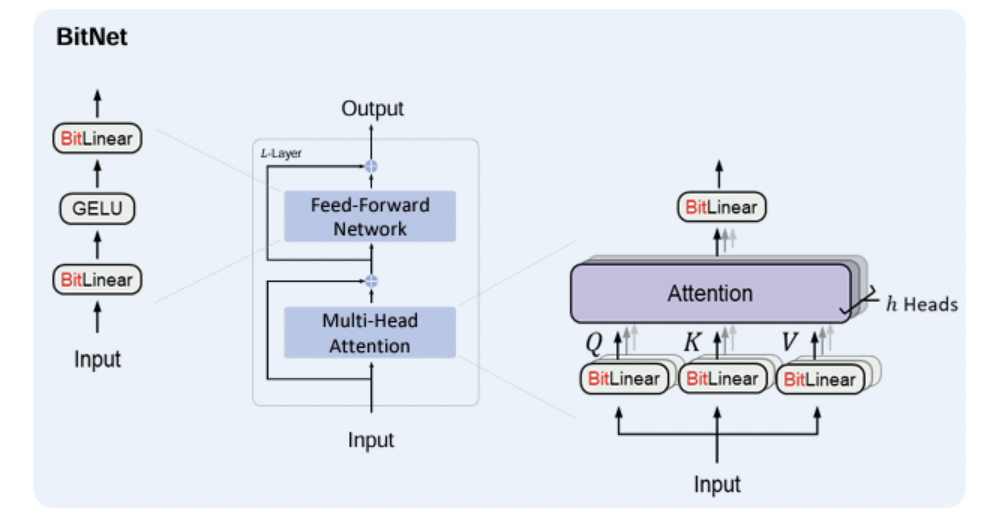
Same layout as transformers
- Stacking blocks of self-attention
- Feed-forward networks.
Difference?
-
Instead of the regular matrix multiplication, use BitLinear
\(\rightarrow\) Limit the model weights to the possible values of (-1,0,1)
Constrain weights to ternary values
\(\begin{gathered} \widetilde{W}=\operatorname{RoundClip}\left(\frac{W}{\gamma+\epsilon},-1,1\right), \\ \operatorname{RoundClip}(x, a, b)=\max (a, \min (b, \operatorname{round}(x))), \\ \gamma=\frac{1}{n m} \sum_{i j} \mid W_{i j} \mid . \end{gathered}\).
How to ensure that the weights will only be -1, 0 or 1?
\(\rightarrow\) Use absolute mean quantization.
- Step 1) Scale the weight matrix by its average absolute value.
- Step 2) Round each weight to the nearest number among the three possible options
5. Experiments
